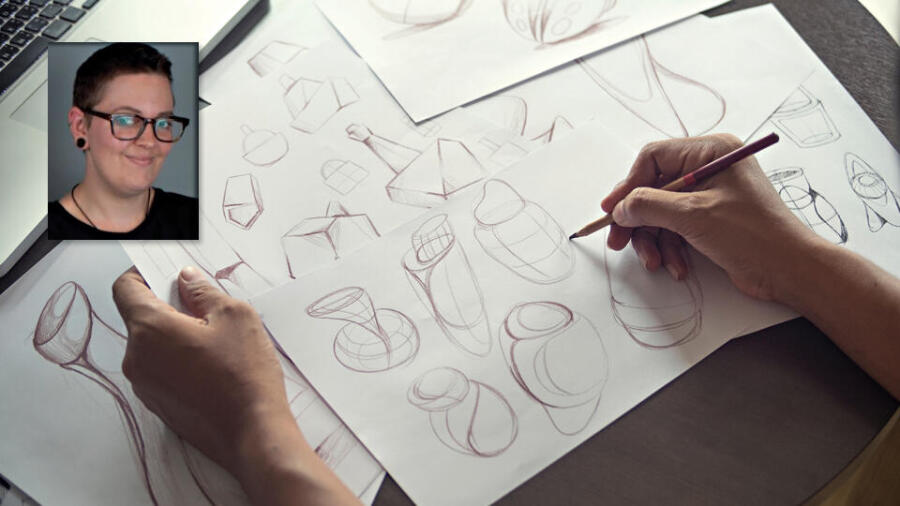At least once every couple of weeks I take a figurative step back and really think about the industry we’re part of. It’s absolutely weird, it’s definitely wonderful and I never in a million years thought I’d end up here. I also don’t imagine any of us considered that we’d potentially be developing sex toys during one of the largest global health crises this century.
Product development at ElectraStim is constantly in motion; partly because there’s so much to consider when creating electro sex toys but also because we’re not very good at sitting still! For the last couple of years we’ve had two or three (if not more) projects on the go at any one time which gives us a solid schedule of R&D, even if we’re still in the research phase or waiting on quotes for materials/tooling to be made. Since COVID-19 became part of our daily lives this process has continued largely unabated; just one of the many benefits of being a smaller, niche company where we perform almost every function ourselves.
With a product that relies on physical sensation, we’re more reliant than ever on strong product design and quality packaging to communicate to the customer.
The benefits of in-house product development are numerous; taking your wildest ideas and seeing them through to fruition is uniquely satisfying. Aside from that, the complete control you have over every aspect of your design and operation suits the way we operate. During the pandemic it also means that we haven’t needed to pause our R&D while waiting for suppliers or other third parties to return to work. If anything we’ve accelerated with more time available to focus on exactly how new products work and why we’re making them. We might not be able to sit around a table and make plasticine models of prostate massagers at the moment but very little else has changed in that aspect of the business. It’s sometimes a frustrating and often complex process but a hugely rewarding one where you can take complete control of the direction in which a product range develops.
My first experiences of creating a new product in the adult industry involved choosing from a selection of designs from a manufacturer catalog before amending the branding and packaging within a template. Whereas there’s no denying that this type of white-label design often works (plenty of customers purchased that particular range), there’s nothing quite like seeing the whole process of a rough sketch or concept becoming a finished product. In-house development is uniquely suited to niche manufacturers like ourselves; ultimately our products are a specialty and we have more of the knowledge and experience necessary than a factory who dabbles in a lot of areas. This doesn’t just apply to electro-sex. The more specialty the product, the more sense it makes to bring the development in-house where the experts are. That’s not to say if you’re creating more “mainstream” products that in-house development isn’t for you; the opportunity to be creative has benefits that in my opinion outweigh any negatives.
All this is to say that during lockdown it became even clearer that this path of development is right for us and one I would encourage any sex toy brand to try. If you already develop in-house, you’re more than familiar with not only how much fun it is, but that the quality of your products is often higher. This hands-on approach helps to make you passionate, invested and ultimately proud of the products you’re putting out into the world. There are elements that you probably won’t be able to do yourself, but the intimate knowledge of every aspect of a toy sets your customer service apart from the rest and highlights your brand as an authority in your field. By no means are we alone at ElectraStim in advocating for in-house product development. Names like Hot Octopuss, Doxy and Bathmate spring to mind as all having products that are unique, interesting and have clearly had an extra dose of passion during their conception.
Now that brick-and-mortar stores (at least in the U.K.) are starting to reopen it’s clear to see that social distancing is going to have a profound effect on our industry on the high street — at least for a while. Although I’m sure it differs between stores and elsewhere in the world, a lot of shops in the U.K. are discouraging customers from handling anything they don’t intend to purchase. With a product that relies on physical sensation, we’re more reliant than ever on strong product design and quality packaging to communicate to the customer. This is where in-house design can give you such an advantage. More than ever your product has to stand out from a sea of silicone and various lengths of phallus; but if you’ve helped transform an idea into a fully formed product, you’re the one best placed to show it off. It can be hard to market products you’re not personally invested in; in-house development overcomes that by letting you be an intimate part of the creative process.
Claire Blakeborough is the marketing and communications manager at Cyrex.








